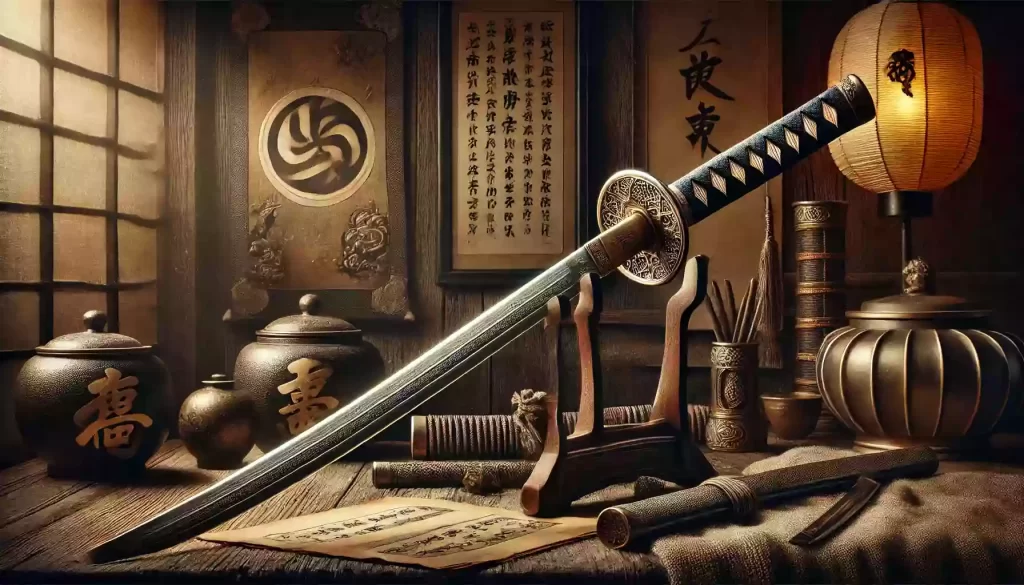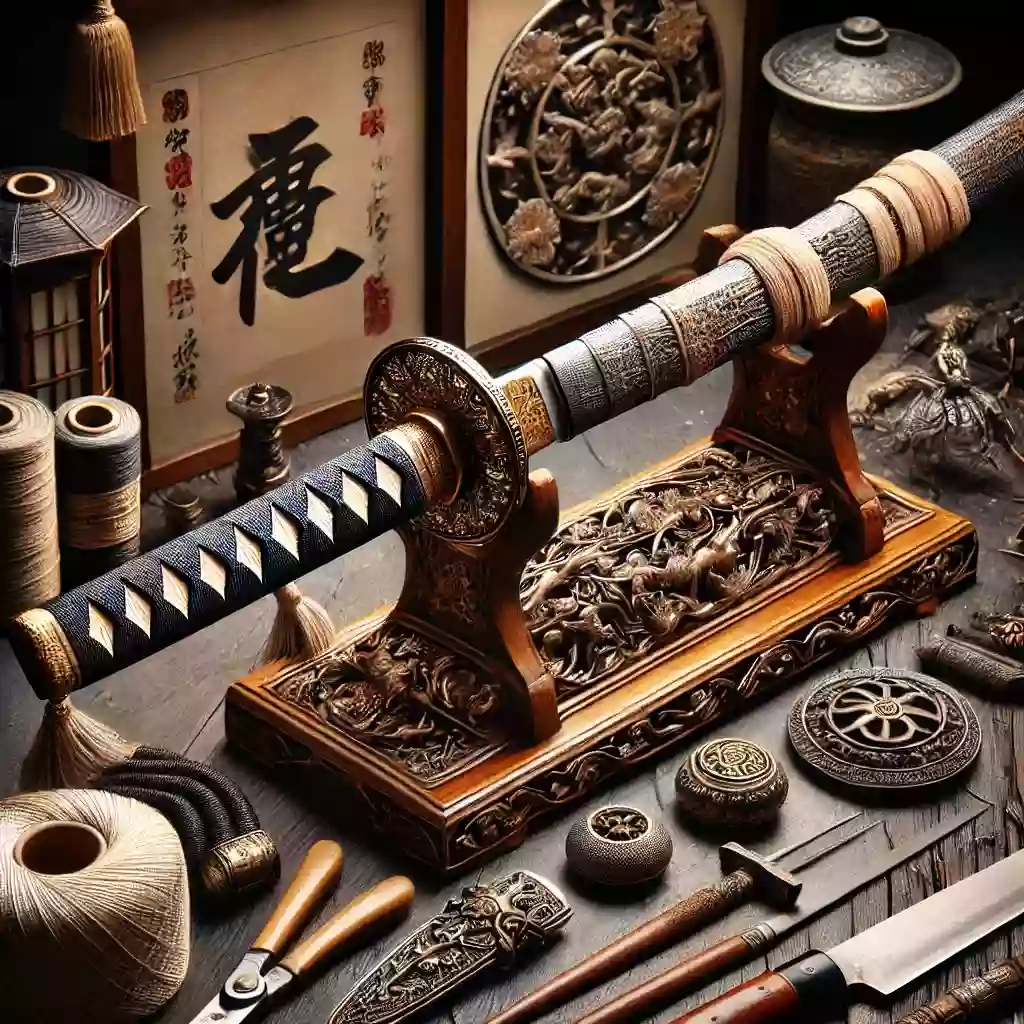The katana, a traditional Japanese sword, has long been revered for its exquisite craftsmanship, unparalleled sharpness, and deep cultural significance. Among the many types of katanas, the vintage katana holds a special place in the hearts of collectors and martial arts enthusiasts. This blog explores the history, craftsmanship, and enduring appeal of the vintage katana.

Ⅰ.The Historical Significance of the Katana
1.Origins and development:
The katana’s origins can be traced back to the Heian period (794-1185), evolving from earlier Japanese swords such as the tachi. The shift from horseback to foot combat necessitated a sword that was not only effective in battle but also easy to wield and draw quickly. Thus, the katana was born, characterized by its curved, slender, single-edged blade, circular or squared guard, and long grip to accommodate two hands.
2.Role in samurai culture:
During the Kamakura period (1185-1333), the katana became the weapon of choice for the samurai, the warrior class of feudal Japan. The katana was more than just a weapon; it was a symbol of the samurai’s honor and social status. It was often paired with a shorter blade, the wakizashi, and together they were known as the daisho, representing the warrior’s soul.
3.Evolution over centuries:
The katana underwent various refinements over the centuries. During the Muromachi period (1336-1573), techniques such as differential hardening were perfected, resulting in the distinct hamon (temper line) that is a hallmark of high-quality katanas. The Edo period (1603-1868) saw further advancements in metallurgy and craftsmanship, solidifying the katana’s reputation as a masterpiece of Japanese sword-making.
Ⅱ.Craftsmanship and Artistry
1.Traditional techniques:
Crafting a katana is an intricate process that involves numerous steps, each requiring exceptional skill and precision. The blade is forged using tamahagane, a high-quality steel produced from iron sand. The steel is folded multiple times to eliminate impurities and create layers, enhancing the blade’s strength and flexibility.
2.Differential hardening and the hamon:
One of the most distinctive features of a katana is its hamon, the temper line that forms on the blade during the differential hardening process. This technique involves coating the blade with a clay mixture, thicker on the spine and thinner on the edge, before heating and quenching it in water. The result is a blade with a hard, sharp edge and a softer, more flexible spine, which gives the katana its unique combination of cutting power and resilience.
3.Aesthetics and customization:
The aesthetics of a katana are as important as its functionality. The blade is often decorated with intricate carvings (horimono), while the fittings (koshirae) are crafted with equal attention to detail. The handle (tsuka) is wrapped in ray skin and silk, and the guard (tsuba) can range from simple designs to elaborate works of art. Each katana is unique, reflecting the personality and status of its owner.

Ⅲ.The Appeal of Vintage Katanas
1.Historical and cultural value:
Vintage katanas are highly prized for their historical and cultural value. Owning a katana that dates back several centuries is like holding a piece of history in your hands. These swords tell stories of battles fought, samurai warriors who wielded them, and the master craftsmen who forged them. They are tangible links to Japan’s rich martial heritage.
2.Collectibility and investment:
For collectors, vintage katanas represent a unique and valuable investment. The rarity and condition of these swords significantly impact their value. Katanas from renowned swordsmiths or those with documented provenance can fetch substantial prices at auctions. Collectors often seek out katanas from specific periods, such as the Kamakura or Edo eras, to complete their collections.
3.Martial arts and practice:
Vintage katanas are not just museum pieces; they are also functional weapons. Many martial artists and practitioners of traditional Japanese swordsmanship, such as kendo and iaido, seek out vintage katanas for their training and practice. The balance, sharpness, and craftsmanship of these swords enhance the practitioner’s skills and deepen their connection to the art.
Ⅳ.Caring for a Vintage Katana
1.Proper maintenance:
Owning a vintage katana comes with the responsibility of proper care and maintenance. The blade must be regularly cleaned and oiled to prevent rust and corrosion. Traditional uchiko powder and choji oil are used to clean and protect the blade. The fittings should be inspected and maintained to ensure they remain in good condition.
2.Display and storage:
When not in use, a vintage katana should be displayed and stored properly. Sword stands or racks allow for safe and attractive display, keeping the katana in a horizontal position with the edge facing upward. The katana should be kept in a dry, temperature-controlled environment to prevent damage from humidity and temperature fluctuations.
3.Handling and safety:
Handling a vintage katana requires respect and care. The blade is extremely sharp, and improper handling can lead to serious injury. It is essential to learn proper techniques for drawing, sheathing, and wielding the katana. Practicing with a qualified instructor can help ensure safety and preserve the condition of the sword.

Final Thoughts
The vintage katana is more than just a sword; it is a testament to the artistry, skill, and cultural heritage of Japan. Whether you are a collector, martial artist, or history enthusiast, the allure of the vintage katana is undeniable. Its historical significance, craftsmanship, and timeless beauty continue to captivate and inspire, making it a cherished possession for those who appreciate its profound legacy.